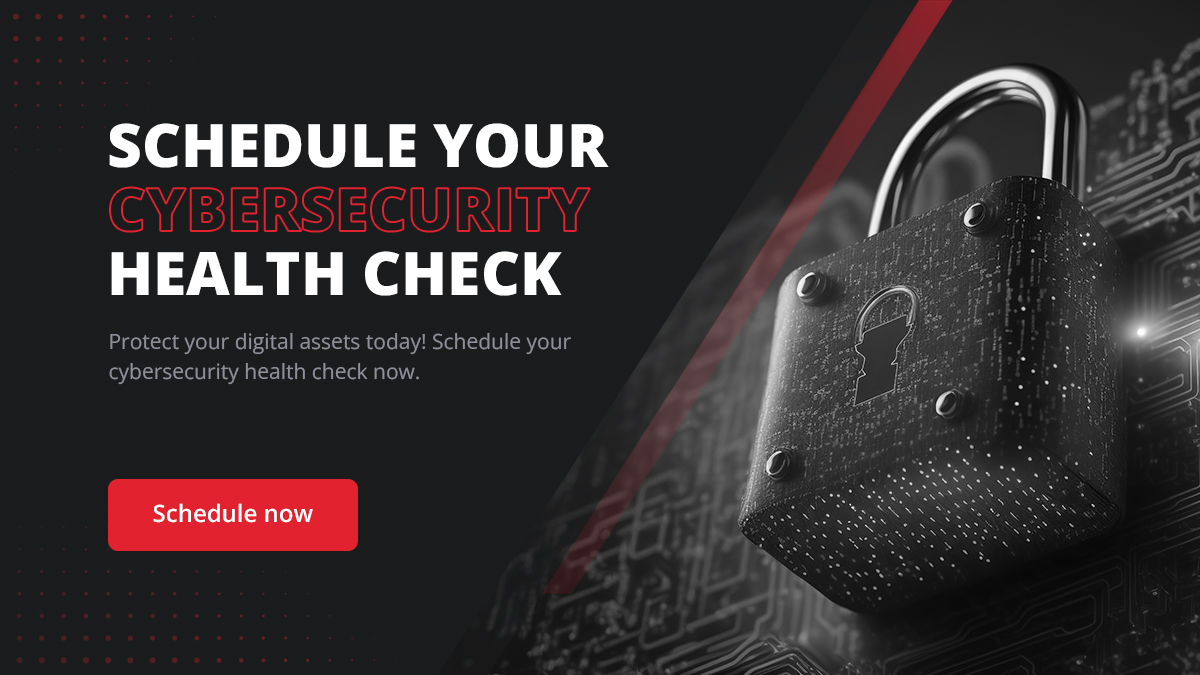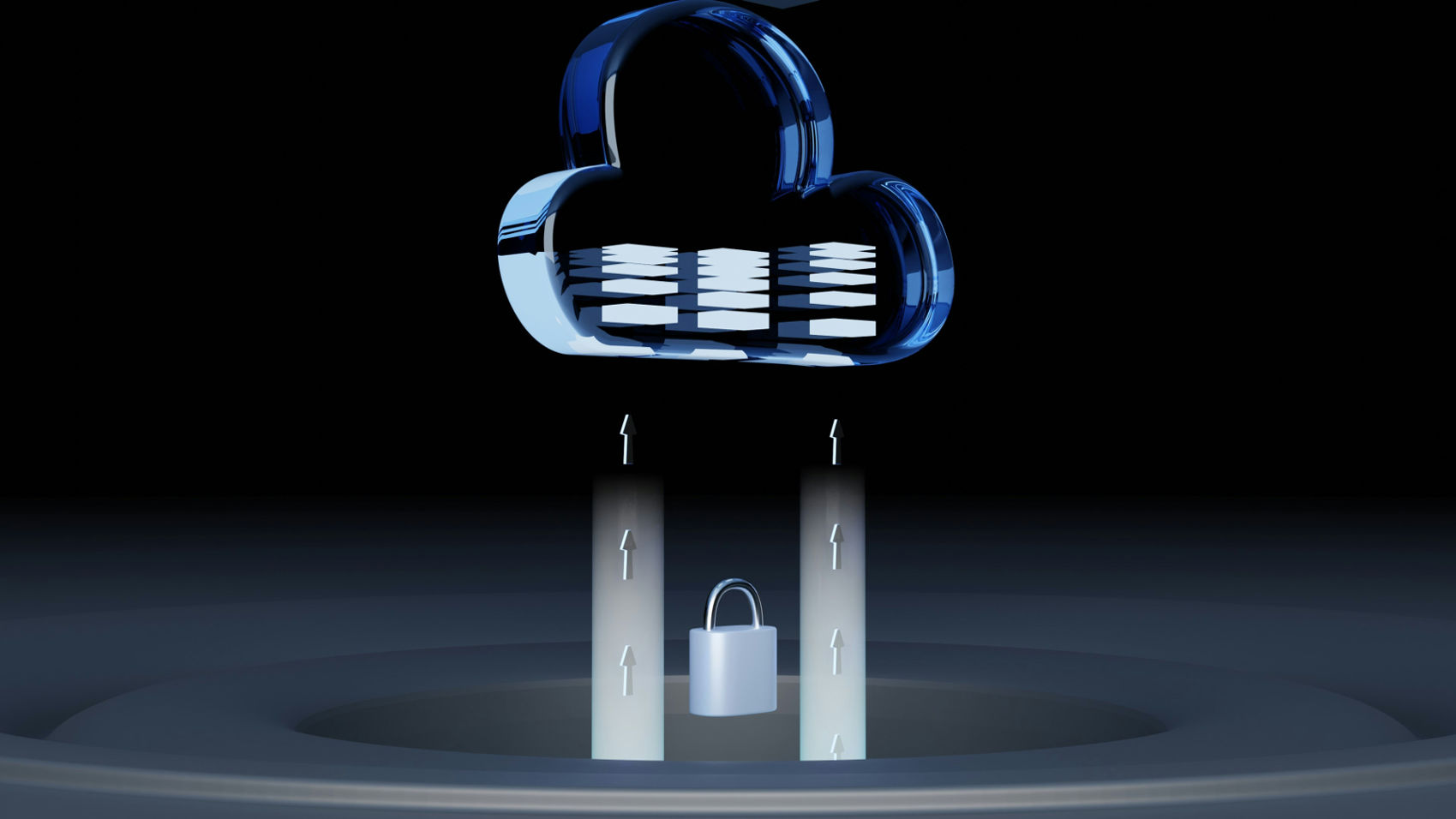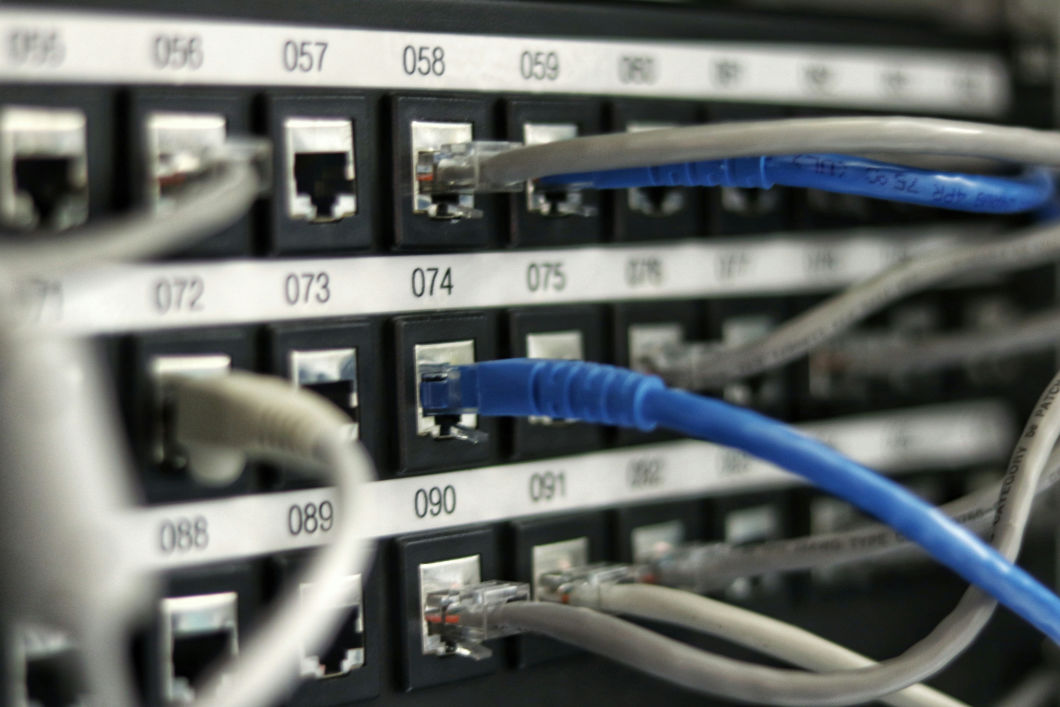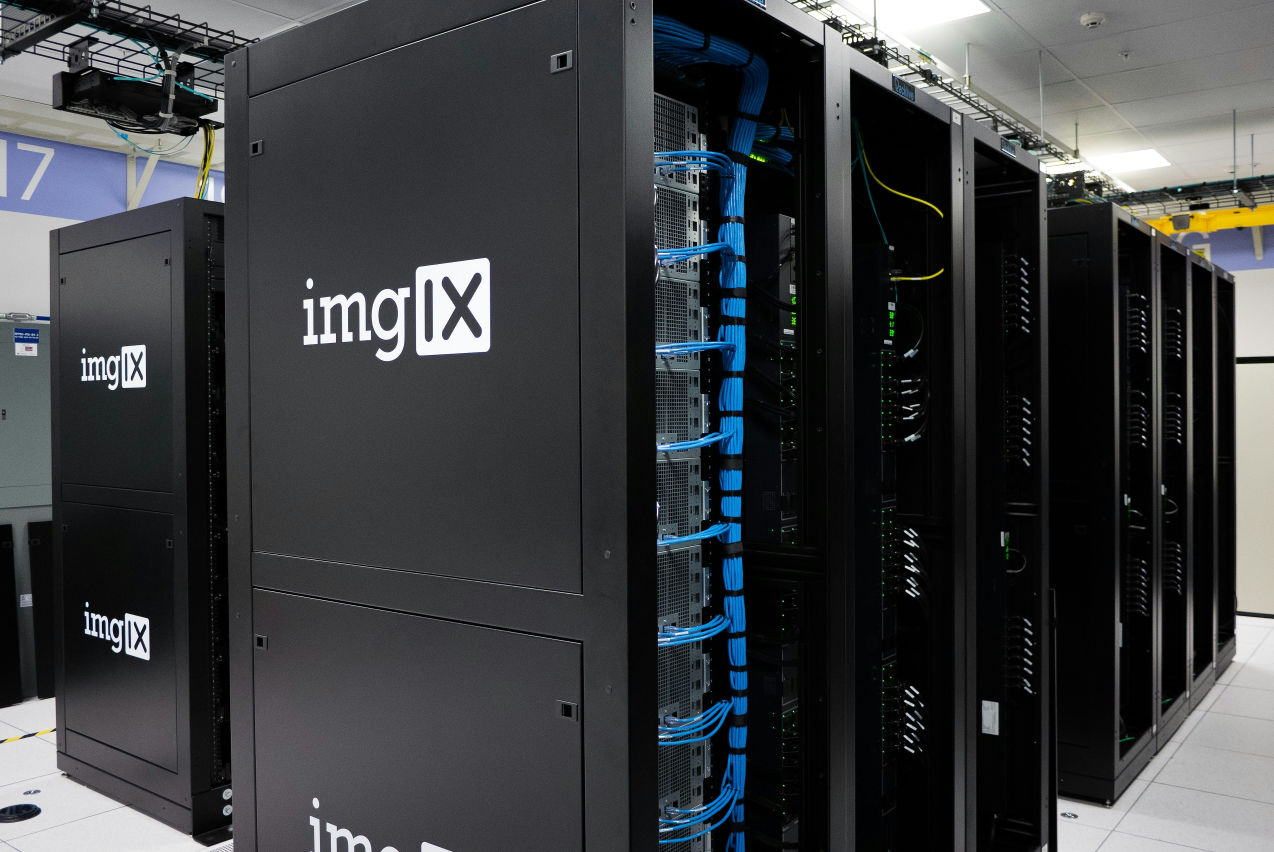Disaster Recovery Testing: Ensure Business Continuity

What is Disaster Recovery Testing, and Why Is It Important?
Disaster Recovery Testing Definition
Disaster recovery is a critical process involving simulating various disaster scenarios to evaluate the effectiveness of a business's disaster recovery plan (DRP) effectiveness. This testing ensures that an organization can quickly and efficiently resume operations after experiencing a disruptive event, such as a natural disaster, cyber-attack, or system failure. The primary goal of disaster recovery testing is to identify gaps in the recovery plan and ensure that all critical systems and processes can be recovered within the stipulated recovery time objectives (RTOs) and recovery point objectives (RPOs).
Importance of Disaster Recovery Testing
The significance of disaster recovery testing cannot be overstated. As businesses increasingly rely on digital infrastructure and data-driven processes, the potential impact of downtime due to unforeseen events has become more significant. Here are several reasons why disaster recovery testing is essential:
- Verification of Capabilities: Testing verifies that the systems can be restored and that the backup systems function correctly. It ensures that data can be recovered and systems can be returned online within the expected timeframe.
- Identifying Weaknesses: Through testing, businesses can identify vulnerabilities within their disaster recovery plan, allowing them to make necessary adjustments to enhance resilience. This might include uncovering insufficient backup resources, gaps in employee training, or technical issues that could impede recovery efforts.
- Compliance and Regulatory Requirements: Many industries are governed by legal and regulatory requirements that mandate disaster recovery plans and regular testing. Compliance management helps avoid legal repercussions and ensures the business meets industry data protection and uptime standards.
- Training and Preparedness: Regular disaster recovery testing helps train staff on their roles during a disaster. It ensures everyone knows the steps to take, reducing confusion and errors during a real crisis.
- Business Continuity Assurance: Ultimately, regular testing reassures stakeholders, including customers, investors, and employees, that the business is robust and prepared to handle disruptions without significant impact on services or operations.
Objectives of Disaster Recovery Testing
Aimed at enhancing the organization's resilience and readiness in the face of potential disruptions, disaster recovery testing serves several key objectives. Understanding these objectives can help organizations tailor their disaster recovery testing to be more effective and comprehensive. Here are the primary goals of disaster recovery testing:
- Ensure Recoverability: The foremost objective of disaster recovery testing is to ensure that all critical systems and data can be recovered to an operational state after a disaster. This involves validating the integrity of backups and the effectiveness of restoration procedures.
- Validate the Disaster Recovery Plan (DRP): Testing is crucial for validating the accuracy and effectiveness of the DRP. This includes confirming that the documented recovery procedures are clear, complete, and applicable to disaster scenarios. The plan should be tested against different disruptions to ensure versatility and robustness.
- Measure Recovery Time and Point Objectives: Disaster recovery testing helps measure whether the recovery time (RTO) and recovery point objectives (RPO) are achievable. RTO refers to the maximum acceptable length of time a business process can be offline, while RPO defines the maximum acceptable amount of data loss measured in time. Testing ensures these objectives are not just theoretical but practical and attainable.
- Identify Improvements: Through testing, organizations can identify areas for improvement in their disaster recovery strategy. This may include upgrading technology, enhancing training, revising protocols, or even reallocating resources for better efficiency and effectiveness.
- Training and Awareness: Disaster recovery testing is also an educational tool that increases awareness and understanding among employees about their roles and responsibilities during an emergency. It ensures that staff are trained and familiar with the procedures, reducing the likelihood of human error during actual disaster recovery.
- Compliance Verification: Many organizations are required to adhere to industry-specific regulations that mandate regular disaster recovery testing. Testing ensures compliance with these regulations, helping to avoid penalties and maintain operational licenses.
- Build Confidence among Stakeholders: Regularly testing the disaster recovery plan builds confidence among stakeholders, including clients, investors, and executive management, that the organization is well-prepared to handle disruptions. This confidence can be crucial for maintaining business operations and relationships during challenging times.
The assumption of a breach forces companies to enhance their detection capabilities and shorten the response time to threats. By presuming that their systems are already compromised, organizations prioritize the deployment of mechanisms that can quickly identify and mitigate ongoing attacks, thereby reducing potential damage.
Types of Disasters
When discussing disaster recovery and business continuity, it's essential to understand the various types of disasters that organizations might face. These can broadly be categorized into natural disasters, man-made disasters, and technological disasters. Each type poses unique challenges and requires specific strategies for effective management and recovery.

Natural Disasters
They include hurricanes, earthquakes, floods, tornadoes, and wildfires. They are caused by natural forces and are generally the most recognized type. These disasters can cause significant damage to infrastructure, disrupt services, and lead to prolonged downtime for businesses. Natural disasters' unpredictability and widespread impact make them particularly challenging to manage. Effective disaster recovery plans for natural disasters often involve comprehensive risk assessments, robust infrastructure hardening, and well-coordinated emergency response strategies.
Man-Made Disasters
They include acts such as terrorism, arson, civil unrest, and war. Man-made disasters result from human actions and can be just as devastating as natural disasters. These disasters can lead to both physical damage to assets and infrastructure and profound impacts on societal stability and security. Man-made disasters require a different approach to disaster recovery, often focusing on security monitoring, crisis management, and public relations to manage the aftermath and restore normal operations.
Technological Disasters
These incidents are caused by failures or malfunctions within technological systems. Examples include data breaches, critical infrastructure failures, or severe software bugs. As businesses increasingly rely on digital technologies, the impact of technological disasters is becoming more significant. Recovery from technological disasters often focuses on IT recovery strategies, including data backup and restore procedures, cyber incident response, and preventive measures such as regular system audits and updates.
The Role of Disaster Recovery Testing in Business Continuity
Disaster recovery testing is pivotal in ensuring business continuity, which is a critical component of any organization's overall risk management strategy. This process is integral in validating the effectiveness of a disaster recovery plan (DRP) and reinforcing an organization's ability to sustain operations under adverse conditions.
Central to Preparatory Measures: The primary function of disaster recovery testing is to prepare an organization to respond effectively to various disaster scenarios. Businesses can assess how well their disaster recovery plans hold up in real-world conditions by simulating different types of disruptions, from natural disasters to technological failures. This testing helps identify any weaknesses or gaps in the DRP, providing a practical basis for making necessary improvements and adjustments.
Ensuring Operational Resilience: Operational resilience is at the heart of disaster recovery testing. The objective is to ensure critical business functions can continue during and after a disaster. This includes maintaining access to essential data, systems, and services crucial for day-to-day operations. By regularly testing these systems, businesses can mitigate risks associated with downtime, which can be costly and damaging to their reputation.
Compliance and Regulatory Requirements: Many industries, especially those in finance, healthcare, and public services, must adhere to legal and regulatory standards concerning disaster recovery. Regular disaster recovery testing ensures compliance with these regulations, helping businesses avoid legal penalties and maintain their operational licenses. Furthermore, this testing demonstrates to stakeholders, including customers and partners, that the business is committed to maintaining high standards of data protection and operational reliability.
Boosting Stakeholder Confidence: A well-tested disaster recovery plan boosts confidence among various stakeholders, including investors, customers, and employees. It reassures them that the business is well-prepared to handle unforeseen events and capable of recovering operations with minimal disruption. This confidence can be crucial during crises, as it stabilizes customer and investor relations and helps maintain market position.
Training and Awareness: Disaster recovery testing also serves as an essential training tool for the organization's staff. It familiarizes them with their roles and responsibilities in the event of a disaster, reducing the likelihood of panic and confusion during actual emergencies. Effective training ensures a coordinated response, which is critical for quick recovery and minimizing impact.
Types of Disaster Recovery Testing
Several types of disaster recovery tests can be employed, each serving different purposes and providing unique insights into the readiness of a plan. These include tabletop exercises, walkthrough testing, and simulation testing. Understanding the nuances of each type helps organizations choose the right approach for their needs and circumstances.
Tabletop Exercises
This exercise is a discussion-based session where team members meet to walk through various disaster scenarios verbally using the DRP. This type of testing involves key personnel discussing their roles and responsibilities and how they would react to specific disaster conditions. The primary goal is to assess the plan’s comprehensiveness and the team's understanding of their duties during an emergency. Tabletop exercises are cost-effective and do not disrupt daily operations, making them a popular choice for initial testing phases or annual reviews.
Walkthrough Testing
Structured walkthroughs, also known as walkthrough testing, take the concept of tabletop exercises a step further. In this type of test, team members perform their tasks according to the DRP as if a real disaster had occurred, but without disrupting any systems. It often includes visiting the physical sites where recovery procedures would be enacted. This method helps identify practical issues in the plan that might not be apparent in discussion-based exercises. Walkthrough testing is particularly useful for training purposes and for verifying the logistical aspects of the disaster recovery plan.
Simulation Testing
Simulations involve creating a simulated environment where aspects of a disaster and recovery are realistically enacted without causing damage or disruption to the organization’s operations. This type of testing is more detailed and realistic than tabletop or walkthrough tests. It can include shutting down specific systems, cutting off power, or other critical operations to see how staff and systems respond. Simulation tests are highly effective at revealing weaknesses in the disaster recovery plan and the organization's response capabilities.
Checklist Testing
This is one of the simpler forms of disaster recovery testing. It involves reviewing a detailed list of recovery procedures and components to ensure every aspect of the disaster recovery plan is covered and all necessary resources are in place. This type of test is often used as a preliminary assessment tool to quickly identify any glaring omissions or inconsistencies in the plan without the complexities of more interactive testing methods. Checklist testing is useful for maintaining ongoing oversight of DRP compliance and readiness without significant resource expenditure.
Full Interruption Testing
The most rigorous type of disaster recovery testing involves a complete shutdown of the primary operational environment to validate the recovery plan and processes in a live scenario. This test aims to see if the organization can still operate from a secondary site or system without major issues. Because it can be disruptive and risky, full interruption testing is typically conducted infrequently and requires extensive planning to ensure that it does not negatively impact business operations. However, it provides the most accurate representation of an organization's capabilities in an actual disaster.
Parallel Testing
It involves running systems in a secondary location while the primary systems continue operating, reducing the risk of disrupting normal operations. The objective is to validate the recovery of critical systems and functions by mirroring operations at the recovery site without actually cutting over to the secondary location. This type of test allows the organization to evaluate recovery setups in real-time, ensuring that data processing can occur in both the primary and secondary locations simultaneously and effectively.

Component Testing
It focuses on individual components of the disaster recovery plan rather than the entire system. This could include testing specific applications, databases, or other critical technological assets to ensure they can be individually recovered according to the DRP. Component testing is essential for identifying vulnerabilities in specific system parts that might not be apparent in broader tests. It allows for targeted adjustments and improvements, enhancing the overall robustness of the disaster recovery strategy.
Components of Disaster Recovery Testing
Disaster recovery testing is a comprehensive process that involves several crucial components, each playing a significant role in ensuring that an organization's disaster recovery capabilities are effective and robust. From developing a disaster recovery plan to choosing the appropriate testing scenarios and approaches, each component needs to be carefully considered and executed to safeguard an organization’s operational continuity.
Developing a Disaster Recovery Plan
The first step in disaster recovery testing is developing a disaster recovery plan (DRP). This plan acts as a blueprint for the organization to follow in the event of a disaster and is critical for minimizing downtime and financial loss. The development process involves identifying and prioritizing critical systems and functions that need to be recovered quickly to maintain business operations. It also includes defining clear roles and responsibilities for the recovery team, establishing communication protocols, and setting recovery time objectives (RTO) and recovery point objectives (RPO).
Key considerations in developing a DRP include:
- Risk Assessment and Business Impact Analysis (BIA): Identifying potential threats and assessing their impact on business operations.
- Resource Inventory: Cataloging all IT assets and services and determining which are critical for business continuity.
- Strategy Development: Outlining specific strategies for data backup, site recovery, and continuity of operations.
- Plan Documentation: Documenting the recovery procedures in a detailed and clear manner that can be easily followed under stress.
Testing Scenarios and Approaches
Once the disaster recovery plan is in place, the next component involves defining the testing scenarios and approaches to ensure the plan works effectively in various situations. This stage requires creating realistic disaster scenarios that could impact the organization based on historical data, geographical location, and other relevant factors. Each scenario should be designed to test different aspects of the DRP and push the limits of the organization's recovery capabilities.
Common testing approaches include:
- Tabletop Exercises: Non-disruptive, discussion-based sessions where the disaster recovery team reviews and walks through the DRP for various scenarios to identify any issues or gaps in the plan.
- Simulation Tests: More complex than tabletop exercises, these involve simulating an actual disaster on a small scale to see how the recovery processes would work in real life.
- Full-scale Drills: Comprehensive tests that simulate a disaster affecting all critical aspects of the business, testing the organization’s full response capabilities.
Testing should also be iterative, with lessons learned from each test used to refine the DRP. This continuous improvement process ensures that the disaster recovery plan evolves in line with new threats and changes in the business environment.
Getting Started with Disaster Recovery Testing
Initiating disaster recovery testing can seem daunting, but it is essential for any organization that relies on digital systems and data for its operations. The first step in getting started with disaster recovery testing is to develop a comprehensive understanding of what needs to be protected. This involves conducting a thorough risk assessment and business impact analysis to identify critical systems and the potential impacts of different disaster scenarios on these systems.
Once the critical assets are identified, the next step is to develop a disaster recovery plan (DRP) that outlines specific recovery procedures for various types of disruptions. This plan should detail the roles and responsibilities of all team members, establish communication protocols, and define recovery time objectives (RTOs) and recovery point objectives (RPOs) for each critical function.
With a DRP in place, the organization should select appropriate testing methods that suit its unique needs and resources. These might include tabletop exercises, walkthrough tests, simulation tests, or full-scale drills. It's important to start with less disruptive tests, such as tabletop exercises, to build a basic level of confidence in the procedures and expand to more complex tests over time.
Executing Disaster Recovery Testing
The critical part is ensuring an organization can effectively respond to and recover from disruptive incidents. This process involves a meticulous step-by-step approach to not only test the functionality of the disaster recovery plan (DRP) but also to ensure that all potential weaknesses are identified and mitigated.

A step-by-step process for conducting a disaster recovery test
Conducting a disaster recovery test typically follows these detailed steps:
- Review and Prepare: Begin by reviewing the DRP for completeness and ensure all participants understand their roles and responsibilities.
- Schedule the Test: Plan the test at a time that minimizes impact on operations. Inform all relevant stakeholders and prepare all necessary resources.
- Execute the Test: Carry out the test according to the DRP, simulating a disaster scenario as realistically as possible. This could range from a tabletop exercise to a full-scale simulation.
- Monitor and Control: Throughout the test, monitor the effectiveness of the DRP and the performance of the various components involved.
Monitoring and documenting the testing process
The disaster recovery testing process is crucial for validating the DRP's effectiveness and future training and improvements. This involves:
- Real-time Monitoring: Observing and recording the response times, decision-making processes, and the ability to access critical systems and data.
- Documentation: Document every aspect of the test, including what went well, what didn’t, and why. This documentation should be detailed and structured to help analyze the DRP's performance.
- Post-test Review: Conduct a review session after the test to discuss the outcomes and gather feedback from all participants. This session is essential for identifying any changes needed in the DRP and for planning future tests.
Step 1: Perform an audit of IT resources
The first step in executing disaster recovery testing is a comprehensive audit of all IT resources. This audit catalogs every component of the organization’s IT infrastructure, including hardware, software, data, and network resources. Understanding what resources are available, where they are located, and how they are configured provides a clear picture of the current IT landscape and helps identify critical elements that need to be included in the DRP.
Step 2: Decide what is mission critical
Once the IT resources are audited, the next step is to determine which resources are mission-critical to the organization’s operations. This involves analyzing which systems and data are essential for maintaining day-to-day activities and determining the potential impact of their downtime on the business. Deciding what is mission-critical helps prioritize recovery efforts and ensures that the most crucial resources receive the fastest restoration during an actual disaster.
Step 3: Create specific roles and responsibilities for all involved in the DR plan
A crucial step in executing effective disaster recovery testing is creating specific roles and responsibilities for all individuals involved in the disaster recovery plan. This step ensures that each team member understands their specific tasks during a disaster, minimizing confusion and streamlining the recovery process. The assignment of roles should cover all aspects of the recovery process, from initial response to full restoration and post-disaster review. Roles might include incident managers, IT specialists, communications coordinators, and executive decision-makers. It's important that these roles are documented within the disaster recovery plan and that all team members are trained on their responsibilities and expectations during a disaster scenario.
Step 4: Determine your recovery goals
These goals are typically defined as recovery time (RTO) and recovery point objectives (RPO). RTO refers to the maximum acceptable time that applications and systems can be offline after a disaster before causing significant harm to the business. RPO defines the maximum age of files that must be recovered from backup storage for normal operations to resume without causing significant harm to the business. Setting these objectives helps prioritize efforts during the recovery process and defines the minimum service level that is acceptable to the organization during a disruption.
Step 5: Implement a cloud data storage solution
Cloud storage provides a scalable and flexible environment that can significantly improve data redundancy and availability. By storing data off-site in a cloud environment, organizations can ensure it is protected from local disasters that could affect physical servers and data centers. Managed Cloud Solutions often come with built-in redundancy and disaster recovery tools, such as automated backups and geographic diversification of data centers, which can be leveraged to achieve the RPOs and RTOs established in your recovery goals. Additionally, cloud storage can facilitate quicker recovery times by providing on-demand resource allocation, reducing the time needed to restore data and critical applications.
Post-Recovery Testing Actions
After completing disaster recovery testing, it’s crucial to take several post-testing actions to ensure that the insights gained from the tests are utilized to strengthen the disaster recovery plan (DRP). These actions are pivotal in refining the procedures and enhancing the organization’s resilience against future disruptions.
Document Test Results and Observations
After conducting a disaster recovery test, the first step is to meticulously document all test results and observations. This documentation should include detailed accounts of what occurred during the test, how systems and personnel responded, any issues or failures that arose, and how the situation was managed. This comprehensive documentation serves as a record for future tests and provides a factual basis for analyzing the effectiveness of the current DRP.
Analyze Performance Against Objectives
Once the test results are documented, the next step is to analyze the disaster recovery process's performance against the pre-established recovery objectives, such as recovery time objectives (RTO) and recovery point objectives (RPO). This analysis helps determine whether the DRP meets the organization's needs or if there are gaps that could potentially hinder recovery in a real disaster scenario. Performance analysis often involves comparing expected outcomes with actual outcomes to identify areas where the DRP did not perform as expected.
Identify and Prioritize Areas for Improvement
Based on the documentation and analysis, identify areas where the DRP could be improved. This might include technical issues that need to be addressed, gaps in team member training, or components of the plan that were found to be outdated or ineffective. It is important to prioritize these improvements based on their potential impact on the organization's ability to recover from a disaster. High-priority issues should be addressed as soon as possible, while less critical improvements might be scheduled for regular updates.

Update the Disaster Recovery Plan
The final step in the post-recovery testing phase is to update the disaster recovery plan based on the insights gained from the test. This includes making changes to address the identified areas of improvement, updating contact lists, revising roles and responsibilities, and refining technical procedures. Regular updates to the DRP are essential to keep pace with changes in technology, business processes, and external conditions that could affect recovery.
Developing a Disaster Recovery Plan
This is an essential step for any organization aiming to safeguard its operations against potential disruptions. A comprehensive DRP not only outlines how to respond to disasters but also ensures that the business can continue operating with minimal impact. This plan involves several crucial steps, from addressing potential disasters to examining the impact of data loss and simulating different disaster scenarios through testing.
Create a Comprehensive Plan to Address Potential Disasters
The first step in developing a DRP is to create a comprehensive strategy that addresses various potential disasters that could affect the organization. This involves identifying all possible threats, whether natural, technological, or man-made. For each type of disaster, the plan must detail specific response strategies and recovery processes. It should also establish a clear chain of command, define roles and responsibilities for all response team members, and outline communication protocols to be used during a disaster. Additionally, the plan should include information on resource allocation, such as where backup systems and data are stored and how they can be accessed during a disaster.
Examine the Impact of Data Loss on Disaster Recovery Testing
Understanding the impact of data loss is critical in disaster recovery planning. This analysis helps determine the most crucial data sets that need protection and the potential consequences of losing access to these data. During disaster recovery testing, it's important to focus on scenarios that involve data loss to evaluate how well the DRP handles such situations. Examining data loss impacts can guide the prioritization of data backups, the implementation of robust data recovery solutions, and the establishment of RPOs (Recovery Point Objectives) to ensure that data can be restored to an acceptable state post-disaster.
Perform Tests to Simulate Different Disaster Scenarios
These tests should cover many possibilities, including the most likely and the most damaging scenarios. Simulation testing helps identify weaknesses in the plan and provides a practical understanding of the plan’s operational capabilities during an actual disaster. It also allows the organization to practice and refine disaster response actions, ensuring that all team members are familiar with their roles and can act swiftly and effectively under pressure.
Establish the Frequency and Importance of Regular Disaster Recovery Testing
Regular testing of the disaster recovery plan is not just a best practice; it is a necessity for ensuring the plan's effectiveness and the organization's preparedness in the face of a disaster. The frequency of these tests should be determined by several factors, including the organization’s risk tolerance, the environment of operation, and changes in the technological infrastructure or business operations. Generally, it is recommended to conduct disaster recovery testing at least annually, though more frequent tests may be warranted for environments that undergo rapid changes or are critical in nature.
The importance of regular disaster recovery testing cannot be overstated. These tests validate the functionality and effectiveness of the plan, ensuring that all components work seamlessly together during an actual disaster. They also help to train staff in their roles during an emergency, which can significantly reduce response times and confusion when a real disaster strikes. Additionally, regular testing helps to expose vulnerabilities in the plan, providing an opportunity to make iterative improvements that strengthen the organization’s disaster response capabilities.
Devise Strategies for Restoring the System After a Disaster
Restoring systems after a disaster is critical to any disaster recovery plan. Effective strategies for system restoration begin with a detailed assessment of the organization's technological and operational architecture. This assessment should identify critical applications, data, and hardware that are essential for the business’s operations. Strategies should then be developed to prioritize the restoration of these critical components in a manner that minimizes downtime and operational impact.
Key strategies might include:
- Data Redundancy: Implementing solutions such as off-site backups, cloud storage, and mirrored systems to ensure data is preserved and can be restored from multiple locations.
- Failover Systems: Establishing secondary systems that can immediately take over when primary systems fail, ensuring continuous operation.
- Modular System Design: Designing IT systems in a modular fashion so that they can be brought back online incrementally, which can help in prioritizing what gets restored first.
- Comprehensive Documentation: Maintaining detailed documentation of recovery procedures and system configurations to facilitate a swift and accurate restoration process.
Best Practices for Disaster Recovery Testing
Disaster recovery testing is a critical aspect of any organization's resilience strategy, ensuring that recovery plans work effectively under stress and can handle unexpected disruptions. Adhering to best practices in disaster recovery testing not only improves the reliability of the recovery plan but also enhances the overall readiness of the organization to face and recover from disasters. This involves identifying effective practices for conducting tests, evaluating the role of data centers, and developing realistic scenarios.
Identifying Good Practices for Conducting Disaster Recovery Testing
Effective disaster recovery testing is built on a foundation of well-established practices that ensure comprehensive evaluation and consistent results. Key practices include:
- Regularly Scheduled Testing: Conduct disaster recovery tests at regular intervals (at least annually) or whenever significant changes occur in the IT environment or business operations.
- Inclusive Testing: Involve all relevant stakeholders, including IT staff, end-users, and management, to ensure that the plan addresses all aspects of the organization and its operational needs.
- Use of Automated Testing Tools: Leverage automation to regularly test systems and processes, which can provide ongoing assurance of recovery capabilities without manual effort.
- Comprehensive Coverage: Ensure that testing covers all critical aspects of the organization, from IT systems to communications and employee roles.
- Documentation and Feedback: Thoroughly document the results of each test and use the insights gained to refine the disaster recovery plan. Encourage feedback from all participants to improve future tests.
Evaluating the Role of Data Centers in Disaster Recovery Testing
Data centers play a crucial role in disaster recovery, serving as the backbone for storing backups and running mission-critical applications. Evaluating their role involves:
- Assessing Redundancy and Resilience: Check that data centers are equipped with redundant power supplies, network connections, and cooling systems to ensure they can operate under disaster conditions.
- Location Analysis: Ensure that data centers are located in areas with a low risk of natural disasters and consider geographical diversity to minimize the impact of regional disruptions.
- Security Measures: Verify that physical and cybersecurity measures are robust and capable of protecting against both physical breaches and cyber attacks.
- Scalability: Evaluate whether data centers have the capacity to handle increased loads during disaster recovery scenarios, which is critical for maintaining operations during a crisis.

Developing Realistic Scenarios to Test the Effectiveness of Recovery Plans
The effectiveness of a disaster recovery plan is significantly influenced by the realism of the test scenarios used:
- Scenario Variety: Develop a range of scenarios that cover different types of potential disasters, including natural disasters, cyber attacks, and technology failures.
- Detail and Complexity: Include specific details and complexities in scenarios to challenge the disaster recovery plan thoroughly and realistically.
- Learning from Past Incidents: Incorporate lessons learned from past incidents, both internal and external, to make scenarios as realistic and instructive as possible.
- Testing Objectives Alignment: Ensure that each scenario aligns with clear testing objectives, which helps in measuring the recovery plan’s effectiveness accurately and meaningfully.
Analyzing the Consequences of Disasters on Recovery Testing
The consequences of not adequately testing disaster recovery plans can be severe. Unseen vulnerabilities can expose an organization without thorough testing when a real disaster strikes. It’s crucial to analyze how different types of disasters—such as natural disasters, cyber-attacks, and hardware failures—affect various systems and processes. This analysis helps in understanding the potential impact on the organization's operations, including downtime, data loss, and financial implications. The findings should guide the testing process, ensuring that the disaster recovery plan addresses and mitigates these consequences effectively.
Understanding the Importance of Testing System Interruptions During Recovery
Testing system interruptions during recovery is vital to understanding how well an organization can cope with disruptions and maintain continuity of operations. This involves deliberately causing interruptions to systems and networks to simulate an actual disaster. Testing these interruptions helps verify the resilience of infrastructure and the effectiveness of recovery strategies, particularly in restoring services and critical functions with minimal downtime. It also helps to train staff in emergency procedures and decision-making under stress, ensuring they are better prepared for actual disruptions.
Strategies for Identifying Gaps and Weaknesses in the Recovery Process
Identifying gaps and weaknesses in the disaster recovery process is fundamental to strengthening the overall resilience of the organization. Effective strategies include:
- Comprehensive Review and Analysis: After each test, conduct a detailed review of the recovery process to evaluate what worked and what didn’t. Look for delays, bottlenecks, and failures that occurred during the testing.
- Feedback Loops: Encourage feedback from all participants in the recovery testing process. Diverse perspectives can provide insights into areas that may not be apparent to the IT team or management.
- Regular Updates and Iteration: Technology and business processes are continually evolving. Regularly update and test the disaster recovery plan to ensure it remains relevant and effective against new threats.
- Use of Metrics: Implement metrics such as recovery time actual (RTA) and recovery point actual (RPA) to quantitatively assess the effectiveness of the disaster recovery plan. Comparing these metrics against predefined objectives (RTOs and RPOs) can help pinpoint specific areas needing improvement.
Ensures Compliance with Regulatory Requirements
Disaster recovery testing is crucial in ensuring that an organization complies with various regulatory requirements. Many industries, particularly those in finance, healthcare, and public services, are governed by strict regulations that mandate the implementation of disaster recovery plans. These regulations often require not only that such plans exist but also that they are regularly tested and proven effective. By conducting thorough disaster recovery testing, organizations can demonstrate compliance with these legal and regulatory standards, avoiding potential fines and sanctions. Moreover, this compliance helps maintain credibility and trust with clients, stakeholders, and regulatory bodies, ensuring that the organization meets or exceeds the minimum standards for data protection, security, and operational continuity.
Facilitates Quick Recovery of Operations
Regular disaster recovery testing is essential for ensuring a quick recovery of operations after a disruption. By testing different disaster scenarios and recovery procedures, organizations can identify the most efficient ways to restore critical systems and operations. This preparation allows for a more coordinated and rapid response in the event of an actual disaster, significantly reducing downtime. The ability to quickly recover operations is vital not only for maintaining service continuity to customers but also for preserving an organization's market position and reputation. Additionally, quick recovery helps maintain employee productivity and confidence, ensuring that the workforce remains effective during and after unexpected disruptions.
Reduces Financial Losses During Disruptions
An effective disaster recovery plan, validated through comprehensive testing, significantly reduces financial losses during disruptions. Downtime in any form can be costly, with potential losses not just in direct sales or output but also in indirect costs such as customer dissatisfaction, data loss, and reputational damage. Disaster recovery testing helps fine-tune recovery processes to minimize the duration and impact of disruptions. By ensuring that systems and processes can be restored quickly and efficiently, the organization can reduce the window of operational impairment and limit the financial impact. This proactive approach to disaster recovery is a critical investment in the organization's resilience and long-term financial health.
How does RedZone Technologies Help with Disaster Recovery Testing?
RedZone Technologies is a prominent provider of robust solutions for disaster recovery testing. The company assists organizations in ensuring operational continuity through innovative compliance solutions, strategic partnerships, and featured solutions tailored to enhance disaster recovery processes.
Compliance Solutions
RedZone Technologies offers comprehensive compliance solutions that help organizations meet various regulatory requirements for disaster recovery. These solutions ensure that businesses adhere to industry-specific guidelines and standards, such as those mandated by HIPAA for healthcare, PCI DSS for payment card information, or GDPR for data protection in the European Union. RedZone provides tools and services that automate parts of the compliance process, making it easier for organizations to conduct disaster recovery testing that aligns with legal obligations. This not only helps in maintaining regulatory compliance but also in building a framework that supports secure and resilient operations.
Key Partnerships
Understanding the importance of collaboration in the tech industry, RedZone Technologies has established key Partnerships with leading hardware and software providers. These alliances enrich the company’s disaster recovery offerings, providing clients with access to cutting-edge technologies and expertise. By leveraging these partnerships, RedZone ensures its clients receive comprehensive support and the most advanced solutions available for disaster recovery testing. These collaborations also allow RedZone to stay at the forefront of technology advancements, incorporating new and improved recovery methodologies into their client solutions.
Featured Solutions
RedZone Technologies fe
atures a suite of solutions to enhance disaster recovery capabilities for organizations of all sizes. These solutions include but are not limited to advanced data backup systems, real-time data replication services, and cloud-based recovery options. One of the standout offerings is its Virtual Security Operations, which provides flexible, scalable, and cost-effective options for maintaining critical IT functions during and after a disaster. This solution allows for rapid restoration of data and applications across multiple geographically dispersed locations, ensuring businesses can continue operations with minimal interruption. Additionally, RedZone offers customized disaster recovery plans and simulations tailored to each organization's unique needs and risks, ensuring that every aspect of the recovery process is tested and optimized.

Conclusion
Disaster recovery testing is an indispensable aspect of business continuity planning that cannot be overlooked. As businesses increasingly depend on digital processes and data-driven decision-making, the potential impact of disruptions has grown significantly. The strategies, practices, and types of testing discussed not only help organizations prepare for unexpected events but also ensure they can quickly resume operations with minimal adverse effects.
Organizations should prioritize the development of a comprehensive disaster recovery plan that includes regular testing, realistic scenario development, and continual refinement based on test results. Key practices such as analyzing the consequences of disasters, understanding the role of system interruptions during recovery, and identifying gaps and weaknesses are essential for enhancing the effectiveness of disaster recovery plans. Additionally, considering compliance requirements and strategically using RedZone Technologies Resources can provide organizations with the expertise and tools needed to maintain resilience and compliance.
Ultimately, disaster recovery testing aims to create a resilient environment where businesses can thrive despite disruptions. By investing in thorough planning and regular testing, organizations can protect their assets, maintain stakeholder confidence, and ensure long-term success. This proactive approach is not just about responding to disasters; it's about thriving in an uncertain world by being prepared for anything that might occur. Contact us today for more information on securing your organization's future with proactive cybersecurity measures.
FAQs
Does the integration of new cybersecurity technologies impact disaster recovery testing?
Yes, the integration of new cybersecurity technologies significantly impacts disaster recovery testing. As cybersecurity threats evolve, incorporating advanced technologies becomes essential to effectively protect against and mitigate these threats. New technologies such as artificial intelligence (AI) for anomaly detection, machine learning (ML) for predictive analytics, and blockchain for secure transaction logging can enhance the robustness of disaster recovery plans. However, integrating these technologies requires updating and testing the disaster recovery processes to ensure they work effectively with the new systems. This integration often necessitates revisiting the risk assessment and business impact analysis to account for the changes brought about by new technologies. Additionally, it may lead to adjustments in the recovery time objectives (RTOs) and recovery point objectives (RPOs) as the organization's capabilities to respond to and recover from disasters improve.
What role do employees play in the disaster recovery testing process for cyber threats?
Employees play a crucial role in the disaster recovery testing process, especially concerning cyber threats. Their involvement is critical because many cybersecurity incidents involve human factors, such as phishing and smishing attacks, improper handling of data, or other user errors that could compromise security. Employees need to be thoroughly trained and regularly tested on their knowledge and adherence to cybersecurity policies and procedures. This training includes recognizing and responding to cyber threats, understanding the use of new security tools and protocols, and knowing their specific responsibilities during and after a cyber incident. Furthermore, involving employees in disaster recovery drills and simulations can help ensure that they are prepared to act swiftly and correctly, minimizing the potential impact of a cyber threat. This proactive engagement helps fine-tune the disaster recovery process and fosters a culture of security awareness throughout the organization.
How can organizations measure the ROI of disaster recovery testing?
Measuring the ROI of disaster recovery testing involves assessing both tangible and intangible benefits against the costs incurred. Tangible benefits include the direct cost savings from avoiding potential downtime, data loss, and other disruptions that could have occurred without effective disaster recovery measures. Organizations can calculate potential loss scenarios by analyzing past incidents, industry data, and the critical nature of affected services. The ROI calculation should also consider reducing recovery times and improving compliance and security standards, which can prevent costly regulatory penalties and reputational damage.
Intangible benefits, though harder to quantify, include improved organizational preparedness and employee confidence, contributing to a more resilient business environment. To measure these, organizations can track employee response times during tests, the number of successful recoveries in simulations, and feedback on the disaster recovery process. By combining these metrics with the cost of testing and maintaining the disaster recovery plan, organizations can formulate a clearer picture of the ROI, demonstrating how proactive investment in disaster recovery testing can safeguard against much larger potential losses.
What common mistakes do organizations make during disaster recovery testing, and how can they be avoided?
Several common mistakes can undermine the effectiveness of disaster recovery testing, but they can be avoided with careful planning and execution:
- Not Testing Frequently Enough: Many organizations fail to test their disaster recovery plans regularly, which can lead to outdated plans that do not reflect current business operations or threat landscapes. Regular testing, ideally annually or biannually, ensures the plan remains relevant and effective.
- Lack of Realism in Testing Scenarios: Using scenarios that are too simplistic or unrealistic can give a false sense of security. To avoid this, organizations should develop testing scenarios based on thorough risk assessments and potential real-world events that could realistically impact the business.
- Inadequate Documentation and Follow-Up: Failing to properly document the testing process and its outcomes can result in missed opportunities for improvement. Organizations should ensure detailed recording and analysis of each test, followed by a formal review process to address any identified weaknesses.
- Excluding Key Personnel from Tests: Sometimes, tests are conducted without involving all relevant stakeholders, which can lead to gaps in the response plan. Including representatives from all critical areas of the business ensures that the plan addresses all necessary aspects of the organization's operations.
- Overlooking Communication Strategies: Effective communication is crucial in a disaster, yet testing often neglects this aspect. Regular drills should include testing communication tools and protocols to ensure messages are delivered clearly and promptly during an emergency.
 Security Updates
Security UpdatesUnderstanding IT Compliance: Scope, Benefits, and Challenges
Discover what IT compliance is, its importance, benefits, risks of non-compliance, frameworks, and how to achieve robust IT compliance in your organization.
 Security Updates
Security UpdatesImplement Secure Browsing with Powerful SSL Decryption
Explore the essentials of SSL decryption, its importance, challenges, and best practices for enhancing security and compliance for business in a detailed guide
 Security Updates
Security UpdatesTransitioning from Proxy Firewalls to Endpoint Security
Explore the evolution from proxy firewalls to endpoint security, enhanced threat detection, data encryption, and comprehensive protection for modern networks.
 Security Updates
Security UpdatesExpert IT Risk Assessment: Protect Your Business Today!
Mitigate potential IT threats with our comprehensive risk assessment guide, ensuring your digital infrastructure. Ensure your business is secure an...
 Security Updates
Security UpdatesEssential Guide to Best Practices in Compliance Security
Explore essential strategies for compliance security in this comprehensive guide. Learn about safeguarding your business and meeting regulatory sta...
 Security Updates
Security UpdatesSecure Your Data with Expert Cloud Database Solutions
Learn efficient solutions and secure your cloud databases with encryption and compliance features, ensuring data safety and privacy across all plat...
 Security Updates
Security UpdatesA Guide to Cloud Network Technology: Benefits and Types
Unlock the potential of cloud network technology for seamless connectivity. Learn and scale solutions that drive business innovation and growth via...
 Security Updates
Security UpdatesAffordable Managed IT Services for Small Businesses
Explore top-managed IT services for small businesses to boost efficiency and security. Get expert insights and practical tips to optimize your IT o...
 Security Updates
Security UpdatesSecure Your Network with Gateway Security Solutions
Explore the essentials of gateway security: learn about its importance for network protection and best practices to safeguard your digital assets e...
 Security Updates
Security UpdatesDisaster Recovery Testing: Ensure Business Continuity
Explore effective disaster recovery testing strategies in this guide to maintain business continuity, prevent data loss, and minimize downtime duri...
 Security Updates
Security UpdatesMaximizing Security: Vulnerability Management Lifecycle
Explore the complete guide to the Vulnerability Management Lifecycle to boost your cyber resilience and secure your business IT infrastructure effe...
 Security Updates
Security UpdatesYour Network with Endpoint Security Management
Explore our comprehensive guide on Endpoint Security Management to understand its importance, how it works, and best practices for robust network s...
 Security Updates
Security UpdatesEnsuring Security Compliance: Tips, Insights & Strategies
Discover the essentials of security compliance, its importance, frameworks, and tools. Learn how to protect data and meet regulatory standards effe...
 Security Updates
Security UpdatesBoost Your Security with Internal Penetration Testing
Dive into internal penetration testing with our in-depth guide. Learn the essentials, techniques, and best practices to fortify your cybersecurity ...
 Security Updates
Security UpdatesEgress vs Ingress: A Guide to Data Traffic Management
Understand Egress vs Ingress in data management. Learn and explore their roles, traffic analysis, risks, and best practices for network and cloud s...
 Security Updates
Security UpdatesPrevent Credential Harvesting to Protect Your Precious Data
Understand credential harvesting. Learn how it works, common techniques, its impact, and strategies to prevent and mitigate attacks to secure your ...
 Security Updates
Security UpdatesSecure Your Big Data: Top Solutions for Data Security
Protect your valuable data with our robust big data security solutions. Learn about the threats and Safeguard against cyber threats and ensure comp...
 Security Updates
Security UpdatesSecure Your Network with Advanced Management Solutions
Explore the details of comprehensive network security management: Learn key strategies, best practices, and tools to safeguard your digital environ...
 Security Updates
Security UpdatesGuide to On-Path Attacks: Protecting Your Cybersecurity
Learn about on-path attacks in this comprehensive guide, exploring definitions, types, consequences, and key prevention strategies to safeguard you...
 Security Updates
Security UpdatesExploring Managed Cloud Services: A Comprehensive Guide
Dive into the Managed Cloud Services with our in-depth guide. Explore benefits, types, and best practices to enhance your business's cloud strategy...
 Security Updates
Security UpdatesComprehensive Guide to Ubiquitous Computing: Impact & Future
Explore the details of ubiquitous computing, from its core concepts and layers to its societal impact, key technologies, applications, and future p...
 Security Updates
Security UpdatesClone Phishing Explained: Detection and Prevention Guide
Discover how clone phishing works and its impact. Learn effective strategies to identify, prevent, and respond to these sophisticated email threats...
 Security Updates
Security UpdatesHow to Secure Your Business with Cyber Security Insurance
Explore the essentials of Cyber Security Insurance, covering its importance, types of coverage, benefits, and considerations for businesses in the ...
 Security Updates
Security UpdatesEfficient Data Spooling Solutions For Streamlined Operation
Learn How To Efficiently Manage And Store Your Data With Our Reliable Data Spooling Services. Keep Your Information Organized And Accessible With T...
 Security Updates
Security UpdatesMaximizing Compliance & Risk Management: Expert Strategies
Learn how to ensure business success with effective compliance and risk management strategies. Explore definitions, differences, frameworks, and ch...
 Security Updates
Security UpdatesUnderstanding MDF vs IDF: Key Differences & Benefits
Explore the crucial differences and examples between MDF and IDF in networking, understanding their roles, functions, and impact on network infrast...
 Security Updates
Security UpdatesRedZone Wins CRN's Top Security 100 & MSP 500 Awards 2024
RedZone Technologies earns CRN's Security 100 & MSP 500 Awards, affirming its leadership and innovative approach in the cybersecurity and IT manage...
 Security Updates
Security UpdatesJames Crifasi Speaks on Cybersecurity at Tech Conference
Join James Crifasi, CTO & COO of RedZone Technologies, at the Tech Conference as he explores cybersecurity's role in driving business growth and ad...
 Security Updates
Security UpdatesRedZone's James Crifasi Wins SonicWall's Technical Hero Award
CTO James Crifasi of RedZone Technologies earns SonicWall's Technical Hero of the Year, exemplifying unparalleled dedication to cybersecurity and I...
 Security Updates
Security UpdatesHow to Encrypt Email in Outlook
Learn how to encrypt email in Outlook with our step-by-step guide. Secure your messages using S/MIME, Office 365 Encryption OME, and add-ins for pr...
 Security Updates
Security UpdatesWhat Is Security Monitoring? Importance and Tools
Explore the importance of security monitoring, its key roles, types, and how it protects organizations against threats, ensuring compliance and pro...
 Security Updates
Security UpdatesServer 2012 R2 End of Life: Implications and Next Steps
Learn about Server 2012 R2 end of life: Understand its impact, key dates, risks post-EOL, and explore upgrade options and migration strategies for ...
 Security Updates
Security UpdatesProtect Personal Data: Smishing and Phishing Prevention
Know how to identify and protect against smishing and phishing attacks. Learn the techniques, types, and preventive measures for personal and busin...
 Security Updates
Security UpdatesSmurf Attack Guide: Prevention & Detection Strategies
Explore prevention & recovery from Smurf Attacks: Understand DDoS defense, detection signs, and secure network practices in our detailed cybersecur...
 Security Updates
Security UpdatesWhat is a Bad USB Attack, and How Do You Prevent It?
Learn about Bad USB attacks, their various forms, and strategies for safeguarding devices. Learn how to mitigate risks with effective prevention te...
 Security Updates
Security UpdatesKey Differences Between DOS Attack vs DDOS Attack
Explore the key differences between DDoS vs DoS attacks, their types, impacts, and prevention strategies in our comprehensive guide to enhance cybe...
 Security Updates
Security UpdatesUnderstanding the Impact of a Ping of Death Attack
Explore the ins and outs of Ping of Death attacks. Understand how they work, their impact on networks, and strategies to prevent them to keep your ...
 Security Updates
Security UpdatesThe Power of the Human Firewall: Your First Line of Defense
Discover the critical role of the human firewall in cybersecurity, combining employee vigilance with technology to protect against cyber threats ef...
 Security Updates
Security UpdatesStateful Firewall vs. Stateless Firewalls: What's the Difference?
Learn the key differences between stateful and stateless firewalls and how they protect your network. Discover the right choice for your security n...
 Security Updates
Security UpdatesUnderstanding the 4 Levels of PCI Compliance
Explore PCI DSS Compliance with RedZone: Key steps to protect card data and ensure secure transactions. Learn about compliance levels and tips for ...
 Security Updates
Security UpdatesWhat Is a Security Breach and How to Prevent Them
Learn how to effectively guard your business against security breaches with RedZone Technologies. Discover simple steps to keep your data safe and ...
 Security Updates
Security UpdatesUnderstanding Tailgating in Cybersecurity
Understand tailgating attacks in cybersecurity: what they are, how they work, and effective strategies for prevention to keep your business...
 Security Updates
Security UpdatesWhat is a Managed Service Provider and Its Benefits
Explore the role of Managed Service Providers (MSPs) in enhancing IT efficiency and cybersecurity for businesses, covering benefits, servi...
 Security Updates
Security UpdatesBreach Prevention: 5 Best Practices to Protect Your Data
Learn about data breaches: what they are, their impact, and how to prevent them. Explore best practices for securing your business against cyber th...






